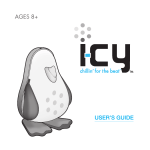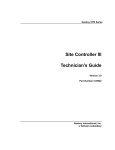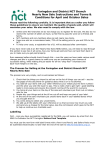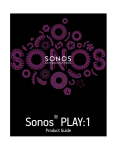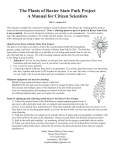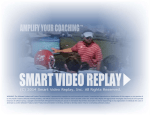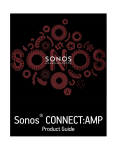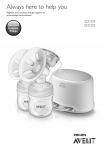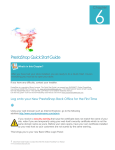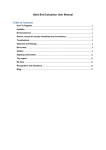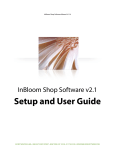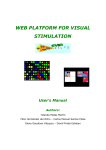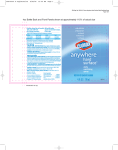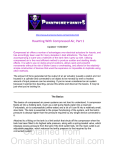Download Tesco direct: Baby feeding buying guide
Transcript
Hello Mike. Not you? Sign out Website Feedback Help Wishlists Home Electrical Home & Garden DIY & Car Toys Sports & Leisure Baby & Toddler Party & Gifts Entertainment Health & & Books Beauty Store locator Tesco.com View basket (0) Go Search from thousands of products Technology & Gaming My account Clothing & Jewellery Christmas Home > Baby feeding buying guide See our product range Bottles Sterilisers Breast Pumps Related guides Baby monitors Baby bedding Car seat for your growing baby Car seat for your newborn baby Cots, cribs and Moses baskets Highchairs guide How to baby and child proof your home How to set up a safe nursery Pushchairs Safety gates Hospital bag guide and checklist Need a different guide? Baby & Toddler DIY & Car Entertainment Garden Health & Beauty Home Electrical Home & Furniture Jewellery Party Sports & Leisure Technology Toys Baby feeding buying guide Breast and bottle feeding your baby When it comes to feeding your baby, choosing between breast and bottle can be a dilemma. All the experts (including baby formula manufacturers) agree that breast is best for at least the first six months, but it isn’t always possible for every new mum. Here’s a guide to what you need to feed your baby successfully, whichever method you choose. More information on this subject is also available on the Tesco Loves Baby Club site. Breast feeding For the first six months all your breastfed baby will need is your own breast milk - it really is everything your baby will need. It also offers protection from infections. Breastfeeding is a very convenient to feed your baby - your baby always has milk ‘on tap’. Just about all the equipment you’ll need is a supply of breast pads and some muslin cloths, so it’s also a great option if you’re on a budget. If you’re returning to work, you may find breastfeeding takes too long or you’d like to give other people an opportunity to take turns and feed your baby, you’ll want to express your milk. Pumping it from your breasts into sterilised bottles is a great way of continuing to provide your baby with your own nutritious breast milk. Expressing is also a way of starting to wean your baby off the breast when you’re both ready. If you have twins or more, expressing can help to relieve you of the need to breastfeed quite as often, which many new mums find exhausting and all-consuming. Expressing breast milk also encourages you to produce more milk, so it’s a great idea for mums of multiples to keep up with demand. You can express your breast milk by hand but it can be hard work. The other alternative is to use a breast pump Choosing the right breast pump for you There are several types of breast pumps available, from a straightforward manual pump to electric ones. If you’re planning to express regularly it’s probably worth buying your own pump, although for short-term use you could consider hiring one. The National Childbirth Trust (NCT) has a hiring service and there are other outlets that offer this option, too. Manual breast pumps: A manual breast pump is simple to use, light, compact, quiet and has no running costs. However, the effort of continuous pumping can be hard work and you may end up with aching hands. Battery operated breast pumps: A battery-operated breast pump attaches to your breast and does the pumping work for you. They do become less efficient as the battery drains but they make expressing quicker and easier than with a manual pump. You can select the pace and the strength of the suction so that you’re comfortable while your milk is being expressed. Mains-operated electric breast pumps: A mains-operated breast pump works like a battery-operated one but won’t lose power. It’s only suitable for use where you have an available plug socket, so it’s less useful than a more portable battery-operated pump. Two-phase expression: Electric breast pumps imitate a baby's natural sucking action. Research has shown that babies start sucking with light, gentle movements to stimulate the production of milk. Then, as the milk starts to flow, they switch to a slower and deeper suck to get as much milk as quickly as possible. These pumps copy this sequence to release your milk quickly and comfortably. Dual breast pumps: These electric pumps allow you to express from both breasts at the same time. This can help to boost your milk production and is a good idea if you have twins or more. A dual breast pump is an expensive piece of kit though, and is probably only worth the investment if you’re planning to express on a regular basis. Choosing the right baby formula If you decide not to breastfeed for whatever reason, don’t worry.Formula milk resembles mothers’ milk quite closely. Your baby may not benefit from the immunity breast milk offers, but he or she will thrive well on formula. Make sure you choose a formula recommended for the age of your baby and always make up the feeds exactly according to the manufacturers’ instructions. The packaging will carry advice about how many feeds to offer as your baby grows. Making up a feed: Although made-up feeds can be stored in the fridge for up to 24 hours, this is no longer recommended because of the risk of bacteria multiplying in the milk. Ideally you should make up feeds as and when your baby needs them. It’s a good idea always to have a sterilised bottle of recently boiled and cooled water ready, with the lid and cap firmly in place, so you can make up the next feed quickly without having to wait for it to cool. If you do make up a feed in advance, it must be stored in the main body of the fridge and not the door, which doesn’t stay as cold. Hungry babies: If your baby seems hungrier even after the recommended number of feeds, don’t be tempted to bulk the feeds out with extra powder as this can lead to constipation and other digestive upsets. Talk to your midwife, health visitor or GP instead, who may recommend you switch formula. For your convenience: You can also buy formula already made up in cartons. This is brilliantly convenient, but it’s an expensive way of feeding your baby. It’s a good idea to keep a couple of cartons in your kitchen cupboard, for times when you need to feed your baby fast and they’re also great for taking out and about with you too. Feeding on the go: Another handy way of making up feeds on the go is to take a flask of boiled water and a small, sealable container filled with pre-measured milk powder. You can then decant the water and powder into a sterilised baby bottle, give it a shake and it’s ready to use. Most restaurants and cafés will give you a jug of hot water to warm a feed if your baby prefers and some stores have bottle warmers in their baby changing rooms. Mixed feeding for babies Mixed feeding is switching between breast and bottle feeding. It’s for when you’ve expressed your milk or if you decide to introduce formula as a supplement to breastmilk. If you’re feeding your baby expressed milk, follow all the instructions for bottle feeding except for the advice on making up feeds. If you’re introducing formula, read the whole section on bottle feeding. How to bottle feed successfully Choosing a bottle: It can take a while to find the type of bottle and teat your baby prefers, but it makes sense to buy standard bottles with soft, silicone, mediumflow teats to begin with. Change to a faster or slower teat if your baby is straining to get more milk, or if milk is leaking from their mouth because it’s coming too quickly. You can experiment with specialist bottles if your baby has colic or trapped wind. You can usually eradicate wind by keeping the bottle tilted so that the milk always fills the teat. This way your baby won’t be gulping air. Here's a complete bottle feeding kit list: Four to six bottles - remember, the small-feed ones will only be useful for a short time,as you’ll very quickly need to switch to full-size bottles Four to six teats A good supply of bibs - you can buy disposable or washable A bottle and teat brush Formula milk A steriliser An insulated bottle bag for travelling An electric bottle warmer (optional) A pack of muslin cloths for spillages - you’ll find these useful for all sorts of purposes Twins and multiple babies: If you’ve had twins or more babies, you’ll need to buy more bottles, teats and bibs in sets of four to six. You can also buy ‘hands-free’ feeding bottles. These attach a teat to a bottle via a long tube so that your babies can self-feed, although you must supervise them at all times. Hygiene matters: Wash all your baby bottles, teats, caps and tops thoroughly in warm, soapy water before sterilising them, using a special bottle brush and paying special attention to threads and grooves. If any of the equipment starts showing signs of wear and tear, replace it as soon as possible. Cracks and poorly fitting teats and lids can harbour bacteria that can cause gastroenteritis, which is serious in young babies. Let your baby set the pace: Some babies guzzle their milk more quickly than others. You might find your baby sometimes nods off mid-feed. This is fine and you can return to the feed a little later, but don’t keep any made up milk for longer than an hour once your baby has started drinking it. After this time bacteria will quickly multiply in the milk, which could make your baby ill. Choosing a steriliser You need to sterilise all baby feeding equipment for the first year. There are several ways to sterilise your baby feeding equipment, but the quickest and most convenient way is to use a steam or microwave steriliser. It's a good idea to practise using your steriliser before your baby is born so you know how it works. Before sterilising any equipment, you must first wash it thoroughly in hot, soapy water and rinse it thoroughly under cold running water. Here’s a guide to what’s on offer Cold water sterilising: For this method, fill a special covered container with water, add a sterilising tablet or the recommended amount of solution and immerse all your baby feeding equipment for at least 30 minutes. Make sure there’s no air trapped in teats or bottles before you immerse them, and remember to rinse everything with cooled, boiled water beforehand. Everything will remain sterile for up to 24 hours as long as it’s kept in the solution. After 24 hours, you’ll need to throw the solution away and start with afresh. The advantages of cold water sterilising are that it’s relatively cheap and a good option if you’re travelling. Cold water systems are comparable in starting price to microwave sterilisers. Microwave steriliser: These are usually more compact and much lighter than electric steam sterilisers, although they don’t generally hold as much. They’re very quick, getting the job done in eight minutes or less, depending on the model. They keep everything sterile for up to 24 hours if you keep the lid on. Remember, you can’t sterilise anything metal in a microwave. Some microwave sterilisers double up as cold water sterilisers for when you’re staying away from home. Electric steam steriliser: These will sterilise your baby feeding equipment in 15 minutes or less, depending on the model. All you need is the unit itself. Your equipment will stay sterile for up to 24 hours if you keep the lid on. Some electric steam sterilisers are more bulky than others but they’re easy to use, quick and efficient. You do need to descale them regularly but they can sterilise metal items. They’re more expensive than other sterilisers. Customer services Our website Explore Tesco My account Help Where is my order? Click & Collect Delivery information Returns policy Contact us Buying guides Sitemap Accessibility Privacy and Cookies policy Terms and Conditions Sign up to our newsletter Thousands more products with Sellers at Tesco Seller directory Groceries Wine by the case Tesco Bank Tesco Clothing Tesco Compare Tesco Phones Tesco PLC Hudl © Tesco.com 2013 ALL RIGHTS RESERVED Clubcard Tesco Photo Tesco Diets Greener Living Opticians blinkbox Careers



